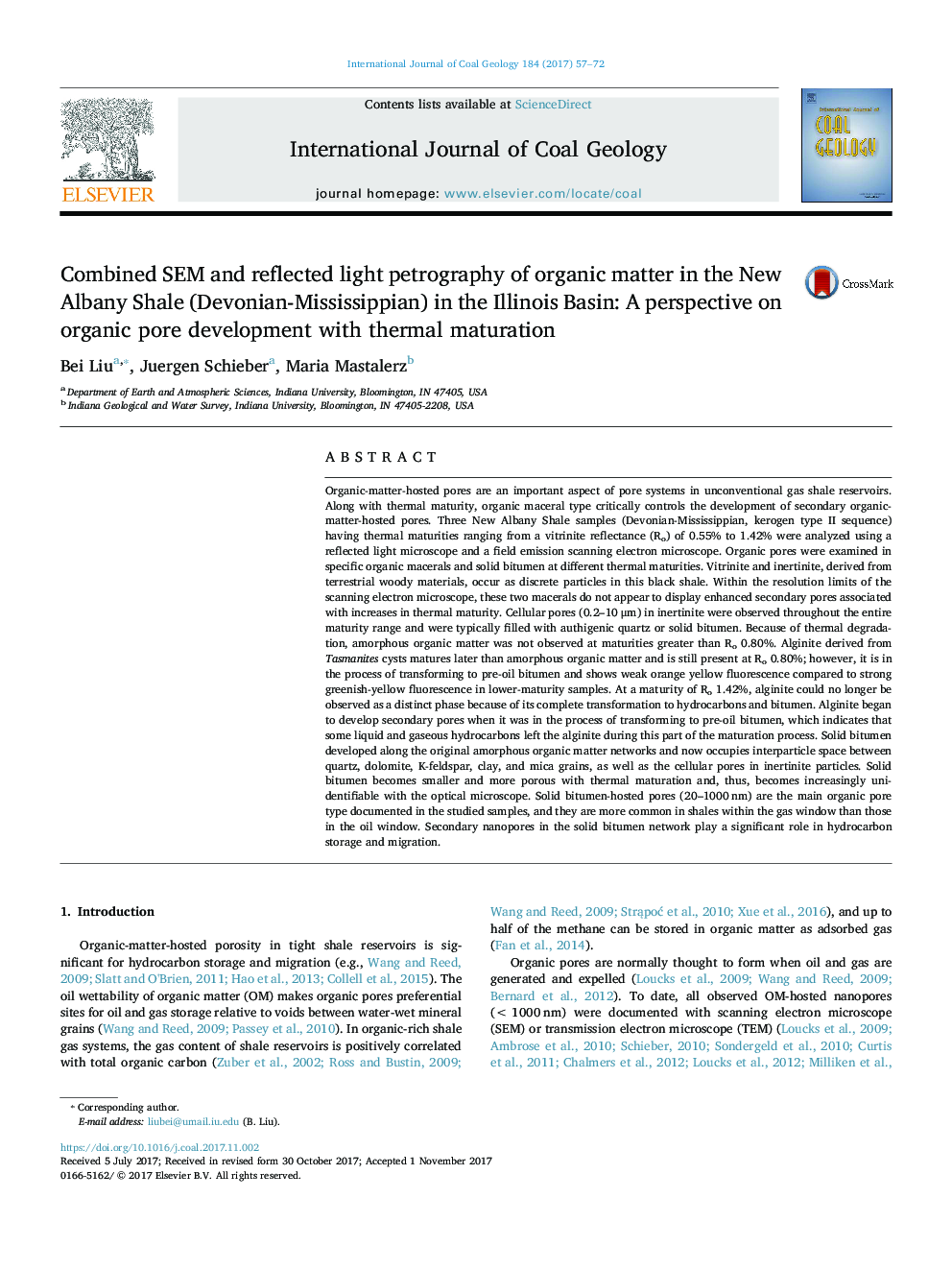| کد مقاله | کد نشریه | سال انتشار | مقاله انگلیسی | نسخه تمام متن |
|---|---|---|---|---|
| 8123652 | 1522519 | 2017 | 16 صفحه PDF | دانلود رایگان |
عنوان انگلیسی مقاله ISI
Combined SEM and reflected light petrography of organic matter in the New Albany Shale (Devonian-Mississippian) in the Illinois Basin: A perspective on organic pore development with thermal maturation
دانلود مقاله + سفارش ترجمه
دانلود مقاله ISI انگلیسی
رایگان برای ایرانیان
موضوعات مرتبط
مهندسی و علوم پایه
علوم زمین و سیارات
زمین شناسی اقتصادی
پیش نمایش صفحه اول مقاله

چکیده انگلیسی
Organic-matter-hosted pores are an important aspect of pore systems in unconventional gas shale reservoirs. Along with thermal maturity, organic maceral type critically controls the development of secondary organic-matter-hosted pores. Three New Albany Shale samples (Devonian-Mississippian, kerogen type II sequence) having thermal maturities ranging from a vitrinite reflectance (Ro) of 0.55% to 1.42% were analyzed using a reflected light microscope and a field emission scanning electron microscope. Organic pores were examined in specific organic macerals and solid bitumen at different thermal maturities. Vitrinite and inertinite, derived from terrestrial woody materials, occur as discrete particles in this black shale. Within the resolution limits of the scanning electron microscope, these two macerals do not appear to display enhanced secondary pores associated with increases in thermal maturity. Cellular pores (0.2-10 μm) in inertinite were observed throughout the entire maturity range and were typically filled with authigenic quartz or solid bitumen. Because of thermal degradation, amorphous organic matter was not observed at maturities greater than Ro 0.80%. Alginite derived from Tasmanites cysts matures later than amorphous organic matter and is still present at Ro 0.80%; however, it is in the process of transforming to pre-oil bitumen and shows weak orange yellow fluorescence compared to strong greenish-yellow fluorescence in lower-maturity samples. At a maturity of Ro 1.42%, alginite could no longer be observed as a distinct phase because of its complete transformation to hydrocarbons and bitumen. Alginite began to develop secondary pores when it was in the process of transforming to pre-oil bitumen, which indicates that some liquid and gaseous hydrocarbons left the alginite during this part of the maturation process. Solid bitumen developed along the original amorphous organic matter networks and now occupies interparticle space between quartz, dolomite, K-feldspar, clay, and mica grains, as well as the cellular pores in inertinite particles. Solid bitumen becomes smaller and more porous with thermal maturation and, thus, becomes increasingly unidentifiable with the optical microscope. Solid bitumen-hosted pores (20-1000 nm) are the main organic pore type documented in the studied samples, and they are more common in shales within the gas window than those in the oil window. Secondary nanopores in the solid bitumen network play a significant role in hydrocarbon storage and migration.
ناشر
Database: Elsevier - ScienceDirect (ساینس دایرکت)
Journal: International Journal of Coal Geology - Volume 184, 1 November 2017, Pages 57-72
Journal: International Journal of Coal Geology - Volume 184, 1 November 2017, Pages 57-72
نویسندگان
Bei Liu, Juergen Schieber, Maria Mastalerz,